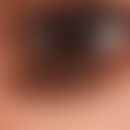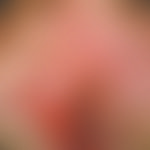DefinitionThis section has been translated automatically.
Non-contagious, subacute to chronic, itchy inflammatory disease of the female genital mucous membranes of unknown etiology.
EtiopathogenesisThis section has been translated automatically.
Unknown, see below. Lichen planus.
You might also be interested in
ManifestationThis section has been translated automatically.
Mostly occurring from the age of 40.
LocalizationThis section has been translated automatically.
The entire vaginal mucosa can be affected.
ClinicThis section has been translated automatically.
Chronically stationary, shiny erythema appears on the inner sides of the labia minora. Increased risk of bleeding even with light touching. Frequently secondary, mechanically induced erosions and whitish reticulation on the primary florescences ( Wickham's drawing). Occurrence of dyspareunia, itching and local soreness.
HistologyThis section has been translated automatically.
The histological changes are largely identical to those of the lichen planus of the skin. Here, too, compact orthohyperkeratosis develops, but also focal orthoparahyperkeratosis. The inflammatory infiltrate may be mixed with plasma cells typical for the location.
Differential diagnosisThis section has been translated automatically.
TherapyThis section has been translated automatically.
The therapy of the disease is long and difficult.
- Smaller, non-erosive, clinically less troublesome foci should only be treated locally with mild, astringent therapeutics (e.g. Tannosynt). The application of dexpanthenol solution (e.g. Bepanthen Lsg.) or dexpanthenol cream (Bepanthen Cream) may be supportive.
- In many cases the topical treatment with highly potent glucorticoids will be necessary. Here, local therapies with 1-2 times/day 0.05% clobetasol (e.g. dermoxin ointment; carison solution) have proven to be efficient. In cases of severe erosions, the topical combination of steroids, tetracyclines (e.g. Achromycin ointment) and Nystatin ointments (100,000 IU/g, e.g. Nystatin Holsten ointment) was used with satisfactory results. For less acute complaints, topical glucocorticoids such as prednicarbate (Dermatop Fatty Ointment) or methylprednisolone aceponate (Advantan Fatty Ointment) are indicated until the acute complaints have subsided. Subsequently, a bland care with dexpanthenol cream.
- Alternatively 0.1% tacrolimus (protopic) ( OFF-LABEL-USE): 2 times/day in the 1st week and then once/day from the 2nd week on, alternating with topical glucocorticoids if necessary.
- Alternatively Pimecrolimus (Elidel) ( OFF-LABEL-USE): 2 times/day in the 1st week and then once/day from the 2nd week onwards, if necessary alternating with topical glucocorticoids.
- Alternatively estrogen ointments (e.g. Estriol ointment) ( OFF-LABEL-USE): Estrogen ointments (e.g. Estriol ointment).
Internal therapyThis section has been translated automatically.
A systemic administration of prednisolone (e.g. Decortin H) initially 1.0-1.5 mg/kg bw/day can have a positive influence on the clinical course.
Progression/forecastThis section has been translated automatically.
The incidence of neoplasia, especially squamous cell carcinoma, is not yet known. Close-meshed controls are recommended in patients with ulcerations.
LiteratureThis section has been translated automatically.
- Cooper SM et al (2006) Influence of treatment of erosive lichen planus of the vulva on its prognosis. Arch Dermatol 142: 289-94
- Cooper SM et al (2004) No association between hepatitis B or C viruses and vulval lichen planus in a UK population. BJOG 111: 271-273
- G Kirtschig et al (2005) Mucosal vulval lichen planus: outcome, clinical and laboratory features. J Eur Acad Dermatol Venereol 19: 301-307
- Lotery HE et al (2003) Erosive lichen planus of the vulva and vagina. Obstetrics & Gynecology 101: 1121-1125
Outgoing links (15)
Astringents; Dyspareunia; Glucorticosteroids topical; Leukoplakia; Lichen planus classic type; Lichen sclerosus (overview); Methylprednisolone aceponate; Nystatin; Off-label use; Pimecrolimus; ... Show allDisclaimer
Please ask your physician for a reliable diagnosis. This website is only meant as a reference.











